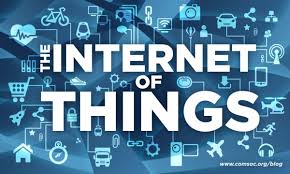The Age of Information and Hyperconnectivity (Part 1)
By Asher Crispe: November 3, 2014: Category Inspirations, Networks of Meaning
 Somewhere in my private archive of youthful memories and formative experiences, I filed a distinct impression of never having glimpsed the rich imaginative possibilities of literature until I was introduced to the writings of James Joyce during the fall semester of my senior year in high school. Taught by a seasoned Dublin dweller with fistfuls of insight into Joyce’s Ulysses’ from having repeatedly traversed its covers during his dissertation, I was catapulted into a strange new universe of language games, streams of consciousness, and the outpouring of what I had previously judged to be the unsaid or the unsayable onto the textual tarmac. Suddenly, my appreciation for literary life took off.
Somewhere in my private archive of youthful memories and formative experiences, I filed a distinct impression of never having glimpsed the rich imaginative possibilities of literature until I was introduced to the writings of James Joyce during the fall semester of my senior year in high school. Taught by a seasoned Dublin dweller with fistfuls of insight into Joyce’s Ulysses’ from having repeatedly traversed its covers during his dissertation, I was catapulted into a strange new universe of language games, streams of consciousness, and the outpouring of what I had previously judged to be the unsaid or the unsayable onto the textual tarmac. Suddenly, my appreciation for literary life took off.
Stretching back decades now, I can still recall one particular passage from Ulysses’ where its chief protagonist–Leopold Bloom–pulls out a letter which contains a seemingly insignificant spelling error. The passage reads “I called you a naughty boy because I do not like that other world. Please tell me what is that real meaning of that other word?” From the second sentence it is clear that the last word of the first sentence should have been ‘word’ and not ‘world.’ Why intentionally place this mistake in the text?
What Joyce is hinting at is a common malaprop that we all are prone to make: the confusion of ‘world’ and ‘word.’ Normally, we are prone to think that there is a veiled external reality whose objectivity rests secured regardless of our ability to call it out or reference it with language. Words are at best souvenirs of a hot summer day. They are pasted upon the things of the world and help us distinguish and manage them–all the while retaining a fundamentally secondary status. Words might be said or have an accidental kinship or loose correspondence with that which they signify.
In Hebrew, the relationship is much more interwoven. Instead of words and things, we get a hybridized word-thing as illustrated by the root Dalet-Beit-Reish which yields davar (meaning both a ‘word’ and a ‘thing’) as well as dabar (a ‘leader’). When a linguist asks ‘how does one do things with words?’, the implication is that words exert a kind of mastery and control over things. We sense this in the association between an author (a skillful employer of words) and authority. Taking this a step further, we may point out that kabbalistic literature is replete with references to commanding or programing the physical world to perform or behave in a certain way by merely knowing how to use the right words. More radically still, the thing is considered to have been brought into being by words. Words become world forming. Thus, we can contemplate the möbius effect of word before world and world before word.
One of the most popular stories of the Torah is actually (Darren Aronofsky film aside) about the slippage between world and word. Most know it as the tale of Noah (Noach), some animals, a big boat and a seriously overwhelming amount of water. While the world loses its dry land and becomes consumed by water, Noach, his family, and by extension, representative life take refuge in the ark. Chassidic thought reframes this narrative, uprooting it from its original ‘historic’ significance as an epic from the bowels of deep time, and replants it in the future as an allegory for modernity itself. The Zohar [I 117a] in particular projects Noach as a figure of the Messianic future.
Unlike the seasonal tropical storms and hurricanes, the flooding of the world ultimately gets painted in positive terms. Citing the 600th year of the life of Noach as the beginning of the flood (some commentators interpret this as the 6th century of this exceptionally long life i.e. the period from 500-600 years), they underscore the Zoharic notion that this event somehow takes place in the 6th millennium. Noach’s age (especially if we conceive the beginning of the flood as a hundred year period) would correspond to the years 5500 to 5600 in the Hebrew calendar or 1740-1840 of the common era. This timing is highly significant when one considers that the dominate symbolic valency of water is understood to be representative of knowledge.
By any metric, the breathtaking expansion of all forms of knowledge has quite literally flooded the world with knowledge. We no longer experience ‘dry land’ or ‘dry things’– objects in the world unmeditated by a blanket of knowledge. Our experiences of the objective world have been submerged in a bath of superabundant information that we have generated about them. Welcome to the age of information! Even once lonely, brittle, and arid facts have been liquified in vast flows of information. Isolated facts no longer exist. They have been swallowed by bigger conceptual fish.
Ours is not only an age of information, it also is dominated by hyperconnectivity. When sea level rises, no islands remain. Older, dryer notions of discreet identities, and separate substances—where the contours of one thing can be distinguished one from another—are all dissolved by the drive to connect all with all. Genesis [6:11] relates how the “earth was corrupt…and filled with violence.” Rashi and other commentators maintain that this corruption was a kind of promiscuity where everything was cross breading and sexually bonding with that which was not its own kind. Along these same lines, the violence that filled the earth was really a reference to theft. Violence was a violation, but not merely of person. Objects, too, are displaced and become misidentified.
On an abstract plane, both the omni-sexual drives and extreme violence may be applied to our experience of the objective world. Every thing has it borders. Its identity. Its integrity–what is proper to it. When we force the transfer of ‘properties’ or link things up across borders, they begin to lose their definition. Sexuality is a creative synthesis which co-defines partners and sees them in relationship rather than a sharply contrasted individuality. Ambiguity abounds as we can no longer discern where one things leaves off and another begins. Everything becomes entangled. Thus, there is a transgressive nature that may be at the root of both sex and violence. If everything is being linked, then everything is interconnected. Likewise, if one’s ID may be stolen, if one’s properties (these can be character attributes) may be forcibly seized and redistributed to others who did not seem to ‘own’ those properties, then the enduring design of our experiential realm–our world–becomes fluid.
 Just consider the latest tech fad of the smart houses. Now your TV can finally talk with your washing machine and your lights in your home are controlled with your cell phone which also receives inventory updates from your refrigerator. Hour by hour we are RFID tagging more of the stuff in our lives so that we can track it and manipulate it and most importantly–take it online in the aptly named ‘internet of things.’ Everything (with the emphasis of every thing), everywhere, universally connected, without reservation or limitation to like in like, takes us past the melting point of individuality. It is not coincidental that the Midrash insists that the flood waters were boiling. Our world is not only wet, it is increasingly softening distinctions. A map is more navigable if it retains fixed reference points. Drown those too and the quilt of territories comes apart at its seams. A flooded world is a deterritorialized world. Place is eclipsed by non-place. The non-local triumphs over the local. Our only chance at survival (with definition and differences left largely intact) comes in the form of an ark that we must construct.
Just consider the latest tech fad of the smart houses. Now your TV can finally talk with your washing machine and your lights in your home are controlled with your cell phone which also receives inventory updates from your refrigerator. Hour by hour we are RFID tagging more of the stuff in our lives so that we can track it and manipulate it and most importantly–take it online in the aptly named ‘internet of things.’ Everything (with the emphasis of every thing), everywhere, universally connected, without reservation or limitation to like in like, takes us past the melting point of individuality. It is not coincidental that the Midrash insists that the flood waters were boiling. Our world is not only wet, it is increasingly softening distinctions. A map is more navigable if it retains fixed reference points. Drown those too and the quilt of territories comes apart at its seams. A flooded world is a deterritorialized world. Place is eclipsed by non-place. The non-local triumphs over the local. Our only chance at survival (with definition and differences left largely intact) comes in the form of an ark that we must construct.
What is this ark (teivah in Hebrew)? Teivah also means a ‘word.’ When the world is vanishing we seek to dwell within the confines of a word–an idea which we will continue to develop in Part Two.
http://www.interinclusion.org/inspirations/the-age-of-information-and-hyperconnectivity-part-2/
The Age of Information and Hyperconnectivity (Part 1),
















;)
;)
;)
;)
;)
;)
;)
;)
;)
;)

bs”d
Thank u for this article Asher and Sara
Glad you found it. More parts in the series are coming soon!